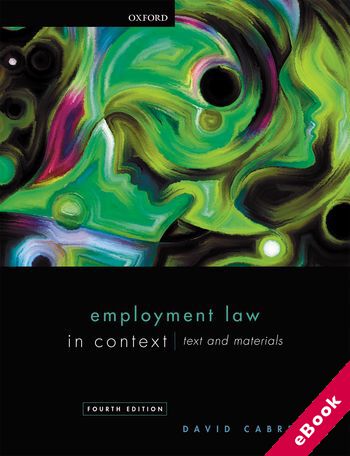
The device(s) you use to access the eBook content must be authorized with an Adobe ID before you download the product otherwise it will fail to register correctly.
For further information see https://www.wildy.com/ebook-formats
Once the order is confirmed an automated e-mail will be sent to you to allow you to download the eBook.
All eBooks are supplied firm sale and cannot be returned. If you believe there is a fault with your eBook then contact us on ebooks@wildy.com and we will help in resolving the issue. This does not affect your statutory rights.
Employment Law in Context provides students with a complete guide to employment law. David Cabrelli combines extracts from leading cases and articles with insightful and sophisticated author commentary to provide the reader with a full, critical understanding of employment law. As well as providing a thorough grounding in individual labour law, and drawing attention to key and current areas of debate, this title offers the reader detailed analysis of the social, economic, political, and historical context in which employment law operates.
An innovative running case study contextualizes employment law and demonstrates its practical applications by following the life-cycle of a company from incorporation, through expansion, to liquidation. Reflection points and examples encourage the development of critical thinking skills and students' ability to view the issues practically.
Online resources
The text is supported by a range of extra resources, including: